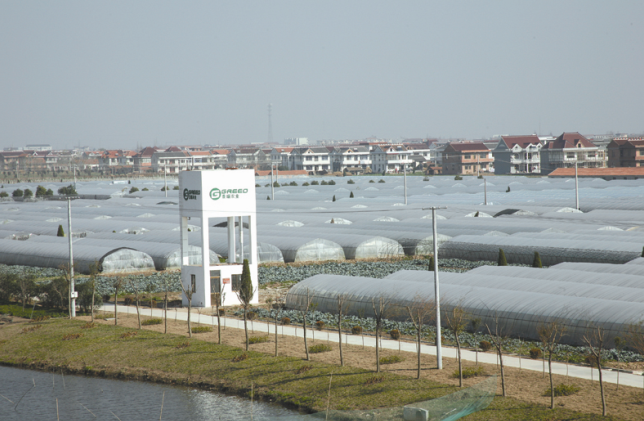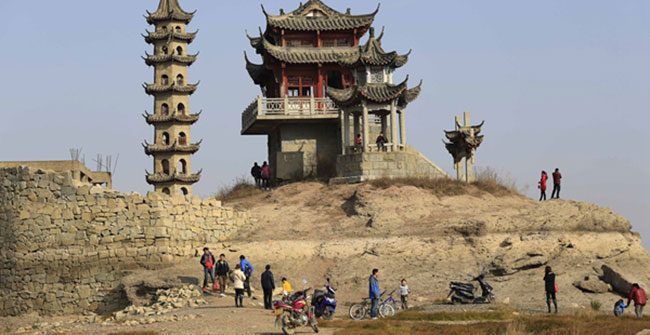Leading Jiangsu’s progress
By Zhuan Ti (China Daily) Updated: 2015-02-13 17:19Editor’s note: In 2014, Nantong, Jiangsu province, made noticeable social and economic progress. The Nantong Report will introduce those achievements and update the changes regularly. In this edition, we look at the city’s efforts in reform and opening-up.
• By the end of 2014, Nantong’s annual grain production had increased for 11 consecutive years. The average yield of paddy rice per mu, which is equal to one fifteenth of a hectare, exceeded 500 kilograms for the first time. Breakthroughs were made in efforts to turn dry farmland into paddy rice fields in the Qihai area of Nantong.

Last year, 12,300 hectares of forest was planted in Nantong. The acreage increase was the biggest in the province. The city’s forest coverage rose to 21.76 percent, with annual growth of more than one percentage point for four consecutive years.
The city saw an addition of 380 farmland trust service providers, whose services cover 14,667 hectares of land and benefit 60,000 local farmers.
The city has 2,110 family farms, including 10 that were approved as provincial-level demonstrative farms.
A total of 104 specialized farmers’ cooperatives from Nantong were enlisted as demonstrative farms by the province. This accounted for 14.6 percent of the total and was the second most in the province.
The city had 18 cooperatives enlisted as national demonstrative cooperatives.
Nantong’s administrative villages’ collective revenue exceeded 200,000 yuan ($306,356) in 2014. The revenue of more than 80 percent of the villages with relatively weaker economies still reached 300,000 yuan.
The minimum living subsidy offered to rural residents in Nantong was increased to 360 yuan per month for each person.
Han Changfu, Minister of Agriculture, praised Nantong’s achievements in agriculture and related fields when he visited the city in December.
According to Han, the ministry will support Nantong’s goal to become a national demonstration zone for modern agriculture.

• In November, Century Paragon, a new five-star cruise ship, made its first trip to Nantong. The cruiser’s arrival at Nantong Port was recognition that the city is a regular docking point for big cruisers along the Yangtze River.
The port is expected to attract a considerable number of tourists and generate a new growth point for Nantong’s tourism.
In 2014, the city tried to enhance the image, brand and scale of its tourist industry. It received 30 million tourists last year, an 11 percent growth from a year earlier, and generated 41 billion yuan in tourism revenue, up 14 percent.
• The city made progress in upgrading its information infrastructure.
By the end of 2014, Nantong had about 6,100 4G mobile communication base stations, with the 4G mobile network covering all the main areas of the city.
An optical network with a speed of 100 Mbps covers 95 percent of the city area. The bandwidth capability of the metropolitan area network of broadband Internet protocol reached 1,320 gigabytes.
The numbers of fixed-line phone and mobile phone users reached 2.3 million and 8.1 million respectively. There are 1.8 million people that use fixed broadband and 5.5 million mobile Internet users in Nantong.
Internet penetration level was 54 percent in 2014, higher than the national average of 45 percent and the provincial level of 52 percent.
The city had a total of 3,400 open Wi-Fi wireless hotspots in 2014.
• In July, the city government signed a strategic cooperation framework agreement with the Aviation Industry Corporation of China, a Fortune Global 500 company.
The AICC Research Institute, the AICC High-tech Development Co and Tontec Technology Investment Group Co Ltd in Nantong signed an asset restructuring agreement, which is expected to help Nantong establish its aviation manufacturing industry.
By 2014, 36 State-owned enterprises invested in 64 projects in areas such as production, logistics, research and infrastructure in Nantong, with investments surpassing 120 billion yuan.

The companies included China National Petroleum Corporation, China Petroleum and Chemical Corporation, China National Offshore Oil Corporation, China Ocean Shipping (Group) Company and Baosteel Group Corporation.
The city’s cooperation with major State-owned enterprises is expected to play an important role in enhancing the growth and quality of its economy in the future, local officials said.
• When Jiangsu’s Party chief Luo Zhijun visited Nantong in April, he praised the city’s achievements in economic and social development in recent years.
Luo pointed out that Nantong played a leading role in the new round of development in the region of central Jiangsu.
Jiangsu province set standards for a total of 36 social aspects to measure city-based progress for the goal of fully establishing a moderately prosperous society by 2017.
According to the standards, Nantong achieved its targets for 2014 and was ahead of the schedule in 31 aspects.
Nantong got 91.4 points — the highest among cities in central Jiangsu — in an assessment of progress in establishing a moderately prosperous society, according to the data from the provincial statistics department.
Nantong was ahead of other cities in central Jiangsu province in terms of major economic indexes, such as GDP, general public budget revenue, the added value of industries above a designated scale, fixed asset investment, retail sales of consumer goods and foreign trade.
Contact the writer at zhuanti @chinadaily.com.cn
- Nation in bid to ward off the Zika virus
- Li drops in for a chat at historic mosque
- Prison time reduced after 11 show they regret crimes
- PLA vows support, contributions to military reform
- Hainan looks to boost visitor numbers
- Excessive emissions a big problem in 59 cities
- Tough rules will cut marine pollution
- PLA revamps command system
- Teen calls for educational reform at political meeting
- Huge investment fraud ring smashed






